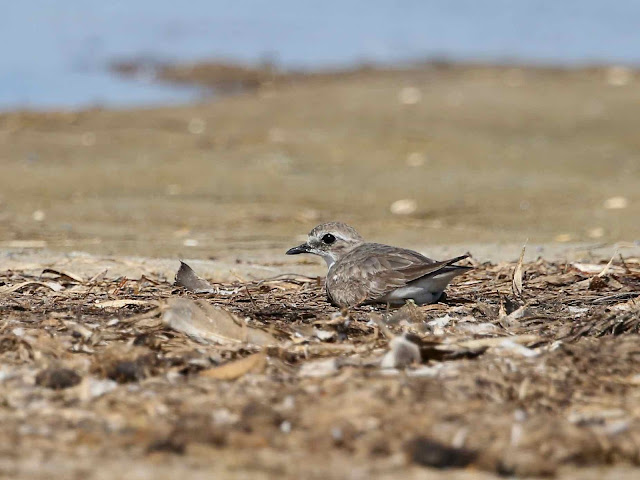Albifrons
Island, a low sand island almost completely devoid of vegetation, has proved to
be a place where unusual migrant shorebird visitors can sometimes be found on
the Gippsland Lakes. Nearby, Crescent,
Waddy and Barton Islands are also good places to find unusual shorebird visitors.
Recently we
found a single Sanderling among Red-necked Stints on Albifrons Island. The
Sanderling is another unusual shorebird for the Lakes. In this case the
Sanderling was out of its preferred habitat. They are usually found in small flocks on
ocean beaches where they specialise in feeding on small invertebrates living in
the sand exposed by receding waves and are only occasionally found on tidal mud
flats.
Sanderling
breed in the high tundra of Asia and North America and they migrate to Europe,
Africa, southern Asia, Australasia and North and South America. They can be
found on sandy ocean beaches around much of the Australian coastline.
The Sanderling
we observed was very busy feeding by probing with its short bill deep into the
sand and sea grass.
Please click on photos
to enlarge.
 |
| The larger Sanderling stood out from the smaller Stints. |
 |
| The Sanderling is a small shorebird variously described as stout, compact or chunky. It has a short slightly drooping bill and short legs. |
 |
| The bird was busy feeding – probing the sand and then moving swiftly to another spot to probe again. |
Sanderling
have been described as “fleet-footed” which seems to be at odds with a stout
short-legged bird. No doubt they need to be fast on their feet to operate in
the zone where ocean waves surge up a beach and then quickly retreat.
 |
| On the move again – it was hard to nail some photos while the bird was stationary. |
 |
| The bird was clearly intent on feeding. |
 |
| My last photo captured a brief pause. |
The 90 Mile Beach, which is often pounded by big Bass Strait waves, is only a few hundred metres away across the barrier sand dunes from Albifrons Island. The lone Sanderling has no doubt come across from the ocean beach to forage in the protected waters of the Gippsland Lakes and we were lucky to come across the bird during this rare visit.
















